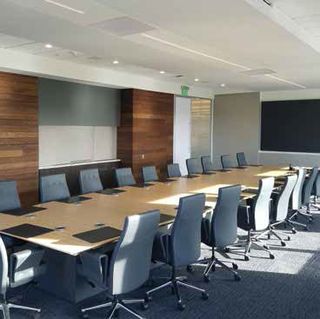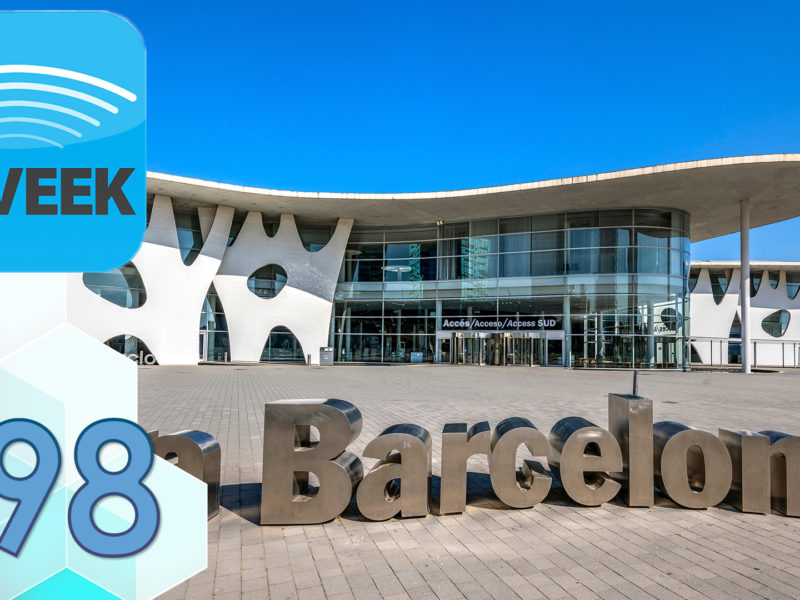Creating an Integrated Meeting Room Experience
One of the biggest catchphrases in the AV industry of late has been the “integrated experience.” What does this entail for spaces like meeting rooms?

A true integrated experience needs to account for all considerations that make an impression on users and provide positive feelings and a successful outcome before, during, and after being in the meeting space. This experience includes their ability to easily find the space, their comfort level within the rooms, their ability to leverage the technology for their needs, and most importantly, the satisfaction they have in accomplishing their goals for the meeting, presentation, lesson, or entertainment.
Here are some critical design and control considerations that lead to a highly valued integrated experience.
MAKING SPACE
First, let’s start with the space: the size of the room should be appropriate for the number of participants. One solution for addressing space considerations and rooms management would be through use of a room-booking and wayfinding system. Furthermore, through development of middleware, external software applications can be integrated with local room control systems allowing data to be exchanged, facilitating automation and optimization. A room-booking system not only helps identify the most appropriate space for the size of the group and technology needs of the meeting or event, it could also set up the room for use based on the scheduled activity. In addition to reserving the room, integration with a calendaring system provides participants with an appointment and reminders that could include details of room location, meeting agenda and content, remote connection details, and even Wi-Fi access details for guests.
The use of middleware connecting enterprise-level room scheduling software with an AV control system within the room can be a big step in creating an integrated experience. Not only can control of the space can be automated and provide a personalized touch specific to the needs of the user, it also helps to optimize room usage and system performance. In ideal scenarios, technology should be transparent to the user unless they choose to interact with it. By integration of environmental controls like HVAC, lighting, and shades along with scheduling and digital signage to guide, welcome, and inform, users will be treated to a higher level of care. This can be taken further by automatically activating aspects of technology that enhance the meeting or event like conference calls, live streams, video playback, or recording. Attendees can also be provided personalized controls via a mobile app or website link that supports communication with other participants, collaborating on documents, requesting help, reporting feedback, and even ordering refreshments. At the close of the event, it is just as important that participants are comfortable leaving and knowing where they need to go, understanding how to end the session or shut down the room, and automatically receiving materials that they need for follow up.
All of this demonstrates how automation can truly provide an integrated experience; however, it’s not done with magic. A lot of effort needs to be invested in the planning, design, software, and most importantly operation of these systems to create harmony that any user will value. It starts with the design of the facility including all spaces with which the participant will interact. With strategically placed signage to communicate meeting schedules, event details, room bookings, and locations of spaces like restrooms, break areas, and exits to the building, users will be comforted and their stress and anxiety minimized. Everyone hates getting lost, being late, and being distracted before an important event.
INTELLIGENT ROOMS
Other key elements within the space are the use of sensors. Knowing when rooms are in use or vacant, temperature, light level, the number of occupants, and possibly who is present will provide the ability to offer automation and adjustments that contribute to better management of the spaces, and enhanced comfort level and experience. Automation of a space is only possible when the proper input and feedback are available from the equipment and systems. A room can be set up for a meeting or event in advance; however, perhaps the activity does not kick off until the following criteria are met: the start time is reached, 80 percent of participants have arrived, and the organizer and key attendees are present. Selection of equipment that provides a robust API and predeveloped control modules plays an important role in ensuring the system is operating at optimal performance. Receiving feedback from the equipment on its current status as well as its “health” and usage history will help to provide finer control and information for proactively addressing needs before they lead to problems.
The last element that is important to consider is the investment in a software monitoring platform that can manage, monitor, control, and maintain all of the spaces within a facility or enterprise. This software needs to be flexible, scalable, and universal enough that it is not limited to integration with one particular brand, but can universally interface with anything that contributes to the integrated experience. As organizations grow and their needs increase, this software will be at the central point of their command center where ability to schedule, launch, support, and manage events is found. The ability to identify status, control activity, and respond to requests with concierge or VIP service can provide the ultimate level of client care and lead to an ideal integrated experience. Additionally, by collecting feedback from the users in conjunction with monitoring the system performance, adjustments can be made to continuously respond to user needs and preferences.
As with most successful outcomes, the integrated experience involves a conscious effort, time, detailed information, and effective planning. By first starting with the result in mind and working backward, the story will be painted as to desired experience and challenges that need to be addressed. Next, the solution will stem from defining the software and automation requirements, which will then dictate the design and hardware elements. As it all comes together, testing and user feedback will provide opportunities for fine tuning and integration. The interactive experience is an ongoing effort rather than a project finish point.
Steve Greenblatt, CTS, is president and founder of Control Concepts, a provider of specialized software and services for the audiovisual industry.
- Post Tags:
- A/V
- Audiovisual
- AV Nation
- av news
- Posted In:
- Media





